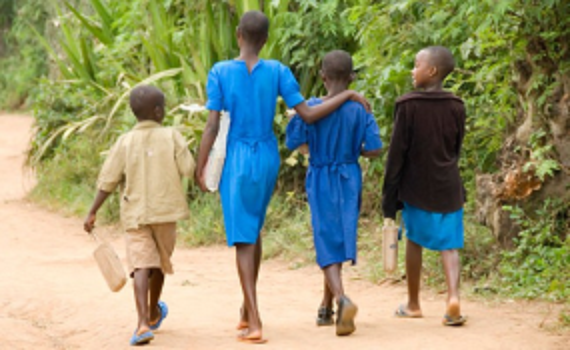África/Rwanda/13 Noviembre 2016/Fuente: Allafrica/Autor:Michel Nkurunziza
Resumen: El Ministerio de Educación está reuniendo otros asociados, entre ellos el sector privado, las iglesias, las ONG y la sociedad civil para movilizar recursos para complementar el presupuesto de educación, actualmente en el 13 por ciento del presupuesto total del gobierno, como parte de los esfuerzos para aumentar el acceso a la educación.
The Ministry of Education is rallying other partners including private sector, churches, NGOs, and civil society to mobilise resources to complement the education budget, currently at 13 per cent of total government budget, as part of efforts to increase access to education.
The call was made at the 2016/17 Joint Review of Education Sector meeting, that brought together education stakeholders in Kigali, yesterday.
Education minister Papias Musafiri said their priorities include increasing access to pre-primary education by increasing infrastructure development, paying teachers’ salaries on time and providing capitation grant, especially in rural areas, for pre-primary schools.
Others include the implementation of new competency based curricula, and improving quality and relevance of technical and vocational education and training (TVET), among other things.
Repetition rate, drop out reduced
Dr Celestin Ntivuguruzwa, the ministry’s Permanent Secretary, said the number of students increased from 2,450,705 in 2015 to 2,544,394 in 2016, while the number of staff increased from 42,004 in 2015 to 43,558 in 2016.
The completion rate in primary has increased significantly from 60.4 per cent in 2015 to 65.2 per cent in 2016 against the 2017 target of 74 per cent.
«The drop-out rate narrowed from 10.3 per cent in 2015 to 5.7 per cent in 2016,» he said.
The number of pre-primary schools increased from 2,618 to 2,834 in 2015 and 2016, respectively while student enrolment increased from 183,645 in 2015 to 190,100 in 2016, a new report shows.
It shows that in lower secondary education, drop-out rate narrowed from 14.4 per cent in 2014 to 6.5 per cent in 2015, meaning that the 2015/16 target of 12.1 per cent has been surpassed.
But the repetition rate remained constant, at 11.6 per cent, meaning the 2015/16 target of 3.1 per cent was not met.
A significant progress has been made in Adult Literacy Programme, whereby a total number of centres increased from 4,313 in 2015 to 4,511 in 2016 while the learners increased from 95,829 in 2015 to 120,820 in 2016.
According to the Workforce Development Authority, TVET institutions increased from 383 to 391, while student enrolment increased from 94,373 last year to 97,671 in 2016.
Officials said there is a TVET financing loan scheme that is being developed to boost the enrolment rate.
Meanwhile, although the total education sector budget, worth Rwf205.6bn, was executed at 99 per cent (Rwf203.7bn spent), the budget allocated to education quality and standards was executed lowest compared to other priorities, according to the sector review report.
Education partners questioned the ministry on why education quality and standards as well as higher educationassurance budget had the lowest execution performance with 77 per cent and 75 per cent, respectively.
Education quality and standards as well as higher education assurance budget were Rwf2bn and Rwf140m yet only Rwf1.5bn and Rwf105m, respectively, was absorbed.
«The low performance in budget execution in comparison to other priorities is influenced by many factors. Partly, it depends on how money is disbursed and where it goes,» Janvier Gasana, the Director General of Rwanda Education Board, explained.
This department, Gasana said, does not only deal with quality but also reducing ratio in classrooms.
«It also deals with monitoring quality and that is why we are focusing on training teachers, increasing the number of schools and teachers while putting in place incentive mechanisms,» he added.
Teacher ratio
On the other hand, Clement Mugabo, the Ag. Director General, Education Planning, said the primary qualified teacher ratio for 2015/2016 is one teacher per 62 pupils against the target of one per 52 pupils.
However, he said that qualified teacher-student ratio in secondary school is on track since one teacher is per 29 students against the mid-term target of 32 students for one student.
Fuente de la noticia: http://allafrica.com/stories/201611110635.html
Fuente de la imagen: http://allafrica.com/download/pic/main/main/csiid/00360054:5e976100770defeabe387ed294e3a4fe:arc614x376:w285:us1.png








 Users Today : 166
Users Today : 166 Total Users : 35459761
Total Users : 35459761 Views Today : 318
Views Today : 318 Total views : 3418290
Total views : 3418290